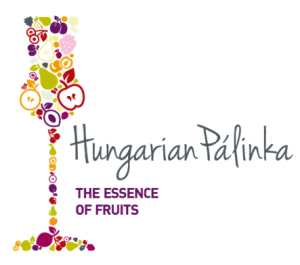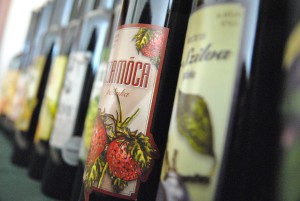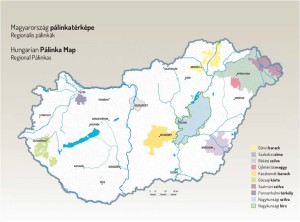Feb 01 2017
Hungarian Pálinka – Questions and Answers
While spirits are produced throughout the world and there are many words which communicate the very essence of these products, – such as “water of life”, eaux de vie, Schnapps -, the Hungarians simply use the term pálinka. The Carpathian Basin is an excellent source of high quality fruit, which was recorded by Pliny the Elder in the Historia Naturalis, as he called it: “Fruit growing Pannonia”.
But let’s look at pálinka a little bit closer…
What is pálinka?
It is a fruit based spirit, made by distillation. According to Hungarian and EU law it can only be produced from fruit, which is grown in Hungary. Yet not only the fruit must come from Hungary, but the mashing, distillation, ageing and bottling have to be carried out in Hungary as well. It is not allowed to use concentrate or preserved (dried) fruit.

The logo of the Hungarian Pálinka brand, Source: Ministry of Agriculture of Hungary
What fruits can you use to produce pálinka?
Basically any fruit can be used, which meets the above mentioned criteria, but it has to be grown in Hungary. And for the best results, proper quality pálinka distilleries are likely to use fruit, which you would also put on the kitchen/dining table, meaning, that it is sound and in perfect condition. As only the best fruit has the necessary amount of sugar and flavours to provide clean, fine pálinka. The quality of the raw material is crucial.
What is Törkölypálinka?
Pomace spirit, made out of 100% grape marc, grown on Hungarian soil. All the above mentioned criteria (production within Hungary) apply here as well. Further on it is not permitted to use grape, of which sugar content got enhanced by any kind of sugar (e.g. fruit, cane, beet…). Wine or wine lees are also not permitted to use. Yet one can produce törkölypálinka with the designation of origin (e.g. Pannonhalma) or Aszútörköly, in which the raw material (pressed shrivelled berries affected by botrytis) comes from the region of Tokaj.
Can pálinka be produced in different styles?
Absolutely, as said, it can come from all kinds of fruits. Cultivated fruit, wild berries and even a blend of two or more different fruits. There are specialties, like “ágyas”, which can be translated as bedded (maceration with the fruit) or ópálinka (ó meaning old), which is aged for a longer period of time at least one to two years, depending on size of the cask in barrel. Furthermore there is the so called “kisüsti” pálinka”, in which the pálinka has been distilled by the small pot – whereby the spirit runs through at least twice in the maximum 1000-litre capacity of copper distil – which is a batch process, usually produces “rougher” or more characterful products.

What can be added to pálinka?
Technically speaking pálinka contains only fruit and (purified) water. Hence these would be on the ingredient list on the back label. It is not allowed to add any flavours (like honey), colour, sweetening, which would change the basic flavour profile of the fruit. However, during the production, there are the following “assisting materials”, that can be used in the process: enzymes, acidity, yeast, clarifying agents, aid to remove heavy metal, nutrients to aid fermentation, foaming inhibitor.

The Pálinka Map of Hungary
What does pálinka mean for Hungarian people?
It is difficult to answer this in few sentences. Pálinka is a “Hungarikum”, protected by law. But perhaps more than this, it is part of the Hungarian culture, consumed at various festivals -traditional -, gatherings, celebrations. A drink, which is often served, when welcoming someone or waving good bye. One in Hungary can produce their own pálinka (strictly regulated by law!) from home grown fruit by giving it to a contract distiller or consume the fine spirit from one of the commercial houses. The number of commercial distilleries increased over the last ten years dramatically (from 30 in 2005 to 123 in 2015); there were never this much high quality pálinkas on the market as today. And the majority is consumed within Hungary, since exports are very low, around 2-3% of the production. Pálinka is a hugely diverse product, not only based on the different types of fruit available in Hungary -not to mention the sub varieties- but also the specified regions such as protected geographic indications (PGI’s see above the pálinka map) which emphasize certain fruit best suited and typical to a designated place.